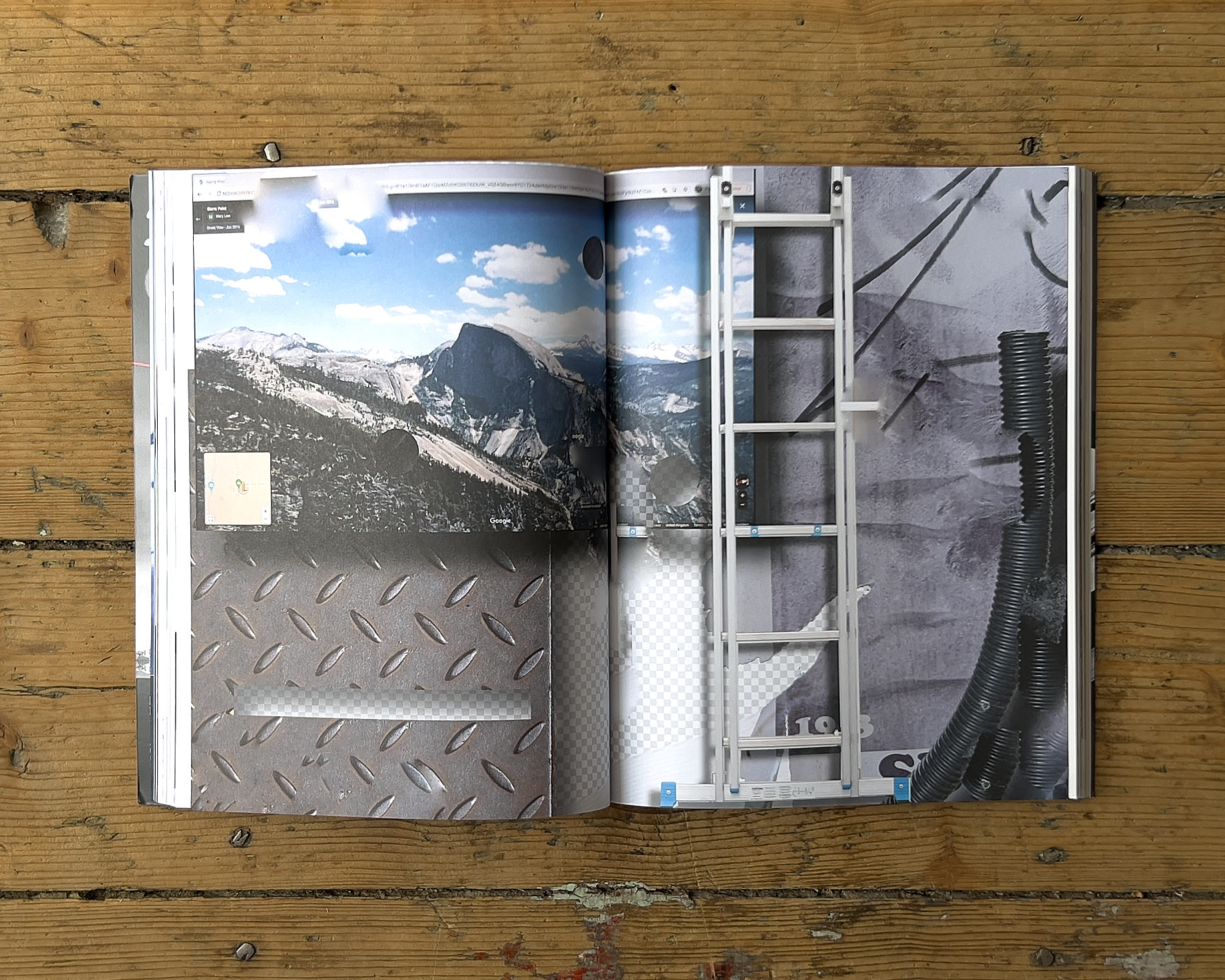BJP ‘ONES TO WATCH’ 2024.
Words by Ravi Ghosh
In 2018 Ibrahim Azab was interning at MAP, a creative agency in London.
He had arrived after months applying for other entry-level positions, following the advice of his tutors at Arts University Bournemouth, from which he had graduated with a BA in photography in 2017. His main job at MAP was cutting out clippings from glossy magazines for the agency's archives, a process he found uninspiring. Azab began to consider this task in terms of value: that fashion brands invest so much time and money in shoots, only for much of the magazine to be discarded.
He took the unwanted publications home to cut up and reassemble, reflecting on reuse, misuse and originality. "I was creating landscapes and not understanding where the surface is, or which part of the image is real or reproduced," he says. These experiments became FOPDTMM, collages that clash discordant motifs and textures - a cast-iron bust chopped up around a static TV screen and marble fireplace in one image, red coiled springs and a clown face overlaying a wire fence in another. A later series, Hyperdeath-Drive (HDD), takes a similar approach with disposable imagery, combining vapes, AirPods and paracetamol packaging
"His work is an eclectic remix," says Emma Bowkett, FT Weekend
Magazine's director of photography, who nominated Azab for Ones to Watch. "It's a rhythm created through photography, performance and sculpture, research, techno and Marx." His work ATIS-MI2A.ZIP nods to a line from The Communist Manifesto: "All that is solid melts into air... and man is at last compelled to face with sober senses his real conditions of life, and his relations with his kind." Small panels with industrial textures and cut-outs evoke the act of looking through, beyond or past a surface, anticipating Azab's book EV3RY(THING'5)MOVING: BUT_/'M(STILL)H3RE, published last year.
Azab was born in 1996 in Slough, one of England's most ethnically diverse towns with a significant Asian population, but attended school and college in majority-white Maidenhead and Henley. Azab spent his teenage years skating, Ding, drawing and painting, before being introduced to the darkroom at secondary school. His critical eye came from his Cork-born mother, who explained how people's differing relationships with money informs behaviour. In the "advertising supercharged late-1990s and early. 2000s", she taught him to unpick commercial messaging, he adds, to stay sceptical and have self-belief.
At Bournemouth Azab was introduced to semiotics and image appropriation, now cornerstones of his curating and lecturing at London College of Communication. Guided by tutor Simon Cunningham, he made a project using ferrofluids, while his interest in architecture led him to photograph Le Corbusier's Unité d'Habitation of Berlin on 4x5 in his second year - "the first time I questioned that friction between value and space" - before scanning the images and swapping foreground and background details in SketchUp, creating infinite loops to UV print.
Azab began connecting image manipulation to psychology,
"considering the idea of consciousness and seeing through unseeing - that a camera is a way of looking within someone's subconscious". Visiting Lucas Blalock's New York studio deepened his sense that perception is malleable - and that multisensory art can influence these perspectives. Cubism, Dadaist Francis Picabia and Walter Benjamin led him to view visual "interactions with the surface of images as fallacies", which could be heightened through touch. In his 2022 installation FLIGHT, viewers can slide his panels across the gallery wall, modulating and reframing the piece themselves.
"I treat the photographic material as visceral - without a physicality
- that can change or is in flux, he explains. For Azab, image-making can help critique the status quo, channelling Marx's revolutionary spirit via iconoclasm and radical collaboration. "Everything I do is forming space for other people," he concludes, "and that in itself goes against capitalism."





